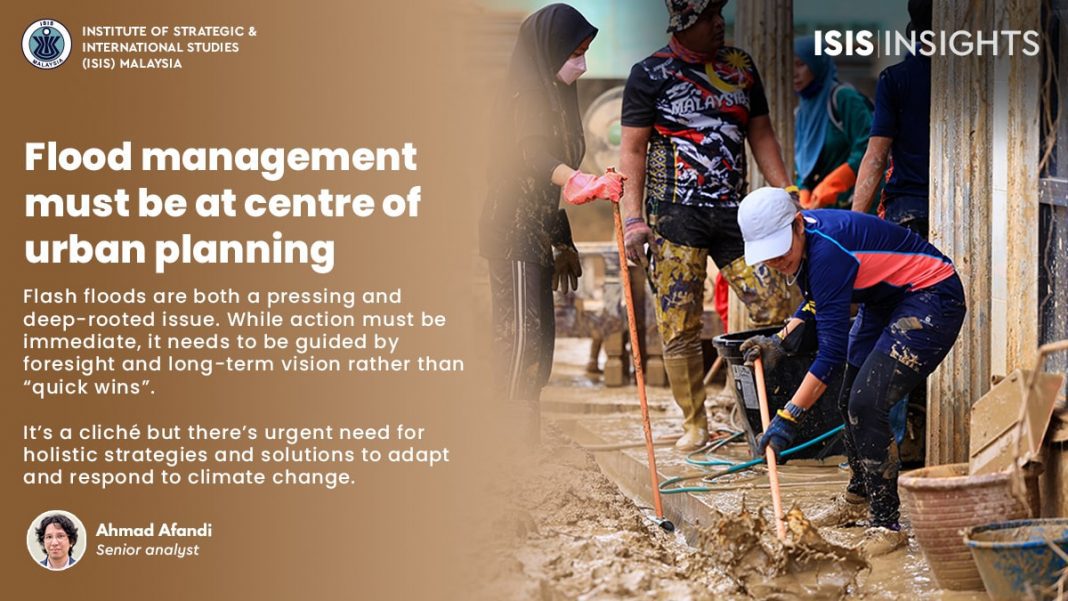Malaysia can no longer ignore climate change, bureaucrats should get their act together.
IN the Klang Valley, flash floods are the new normal.
The sixth Intergovernmental Panel on Climate Change (IPCC) report points out how climate change impacts are already more severe and widespread than initially thought. Southeast Asia is also one of the most vulnerable regions to climate change, whose effects include greater intensity and frequency of extreme precipitation events.
While awareness of the importance of climate adaptation and disaster-risk reduction has increased since the 2021-2022 floods, concerns remain about what lies ahead and the long-term plans to address it.
Data from the Department of Irrigation and Drainage show that the number of flood reports increased from 122 in the year 2000 to 869 in 2020. Allocation and expenditure for flood-mitigation projects and disaster aids increased in tandem.
More recently, Kuala Lumpur City Hall (DBKL) announced 14 interim measures to fight flash floods. The government is considering building more SMART tunnels in major cities, such as Shah Alam, putting the bill at more than RM300 billion for long-term flood-mitigation measures up to 2100.
But is our response to floods and other natural hazards economically efficient and sustainable?
In Malaysia, the approach to addressing major issues is often reactive and ad hoc without addressing the root causes. One might say, it’s borderline insanity.
For example, building more highways to curb traffic congestion. Similarly, placing sandbags and water pumps in flood hot spots and deepening and enlarging rivers to reduce flooding. This is like an obese person who keeps loosening his belt or buying bigger trousers instead of shifting to a healthier lifestyle and diet.
Surely, we need a more sophisticated approach.
While experts confirm that the increasingly intense floods are driven by climate change, we cannot discount the systemic factors that exacerbate the risks. Some examples include poor planning, unregulated and uncontrolled development and the loss of urban ecosystems.
The result is an urban system with little permeability and poor drainage that increases surface run-off, while urban heat islands increase the severity of thunderstorms.
Flash floods are both a pressing and deep-rooted issue. While action must be immediate, it needs to be guided by foresight and long-term vision rather than “quick wins”.
It’s a cliché but there’s urgent need for holistic strategies and solutions to adapt and respond to climate change. The 12th Malaysia Plan acknowledged this.
One way is shifting from solutions that address a single hazard, such as excessive rainfall, to solutions that can tackle multiple hazards (dry spells, heatwaves), other development issues (air and water pollution, poor sanitation, biodiversity loss, lack of green spaces) to maximise investments.
In other words, climate responses should take a “no-regret” approach, delivering as many co-benefits as possible.
A concept that embodies this approach and is gaining attention is “sponge city”. It brings the water cycle into the city and works with nature to absorb, clean, and re-use rainwater. Think of it as a massive urban-scale rainwater harvesting system. Among the key features are contiguous green spaces, urban wetlands, permeable pavements and green roofs.
But the challenges are in planning and implementation on the ground.
The success rate of such complex initiatives requires both “hardware” components of technology and technical solutions and “software” of governance and collective efforts. The system and culture of silo working, bureaucracies and territorial behaviour present governance issues.
Government agencies must share decision-making to foster problem solving and crafting solutions. Extensive stakeholder consultation is required to obtain buy-ins and ensure inclusivity.
Retrofitting a city requires massive capital investment. But an increasing focus on environmental, social and governance (ESG) investing has expedited the requirements for climate goals and presented funding opportunities. Revenue from a proposed carbon tax can be used to fund these activities.
As enablers, policy instruments can enhance economic efficiency and internalise externalities and must be rooted in the polluter-pay principle. These include imposing stricter development controls and risk-based taxes for development in hazard-prone areas.
We are on track for a 2.4° Celsius warming based on current pledges. The world has already warmed up by 1.1° C since the industrial revolution.
Even if our country, cities and businesses miraculously be net zero and cut all their emissions by today, we still face unavoidable climate change impacts and extreme weather events.
Prioritising climate-resilient development and undergoing a radical transformation in flood management is no longer a nicely written policy statement or strategy, it’s a necessity.





